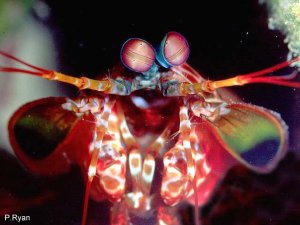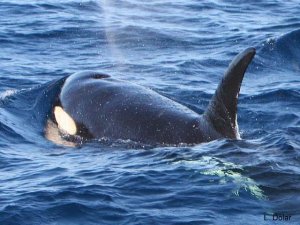 Definition:
Definition:
Biodiversity is the variety of all life forms, the different plants and animals and micro-organisms, the genes they contain and the ecosystems of which they form part.
Marine biodiversity is the variety of life forms in the oceans and their ecosystems. High diversity is desirable.
The international Convention on Biological Diversity (CBD) was signed at the Rio Earth Summit in 1992. This convention was ratified by all countries worldwide with the exception of: Andorra, Brunei Darussalam, the Holy See, Iraq, Somalia, Timor-Leste, and the United States of America.
2010 has been declared the International Year of Biodiversity. In the event, among many other initiatives, the European Commission conducted a campaign to engage citizens in protecting biodiversity.
The 10th Conference of the Parties to the Convention on Biological Diversity took place from 18 to 29 October 2010 in Nagoya, Aichi Prefecture, Japan. All official documents are available here. The report of the International Collective in Support of Fishworkers outlining new objectives and opportunities to recognise small-scale fishers and local knowledge is available here.
Some facts:
- Some 33,300 fish species are registered at the moment in FishBase, the most comprehensive electronic encyclopedia on all fishes known to science. FishBase covers fishes in all kinds of environments (marine, freshwater, brackish and those migrating between marine and freshwater environments during different phases of their lives). More than 318,000 common names in many languages make use easy also for non-specialists.
-
About the same number of fish species occur primarily in marine waters and in freshwater. Some 3,000 species occur in brackish water or migrate between marine and freshwater environments (they are diadromous). For more detail click here.
-
Did you know that when work on FishBase started more than 25 years ago, the experts estimated the number of fish species to between 20,000 and 25,000? Just to show how difficult it was to have an overview without a public register on the internet. This also shows how important it is to do this work for all marine organisms and ultimately for all life on Earth. What we don't know, we can not appreciate and care for.
 SeaLifeBase is expanding the FishBase work to all other marine organisms. Right now it contains 72,300 species with 44,100 common names in many languages. But lots and lots remains to be done, because SLB only started about 10 years ago and there are so many more species to be covered. Marine algae alone are estimated to have more than 40,000 species (see also AlgaeBase), bivalves (mussels, clams and the like) perhaps as many as 80,000 species.
SeaLifeBase is expanding the FishBase work to all other marine organisms. Right now it contains 72,300 species with 44,100 common names in many languages. But lots and lots remains to be done, because SLB only started about 10 years ago and there are so many more species to be covered. Marine algae alone are estimated to have more than 40,000 species (see also AlgaeBase), bivalves (mussels, clams and the like) perhaps as many as 80,000 species.- Species interact with others, small organisms are eaten by big ones etc. (see also the section on ecosystems).
- Every species exist in a particular habitat, in a physical environment with specific characteristics it needs for its survival. Habitats can be the ocean floor, open waters, the crevices of a coral reef, other hard surfaces or soft bottoms etc. The habitat of one species is often made up of other species, as is the case e.g. in a coral reef in tropical waters or in a kelp bed in cold coastal waters.
- Loss of habitat is among the worst threats to species survival, particularly in freshwaters and coastal zones with heavy human interference. Dam building, regular heavy trawling and coastal constructions are among the most pervasive cases. In the North Sea, it is estimated that every square meter, except the no-go areas of wind farms and petroleum rigs, is trawled between 8 and 12 times per year. The former cold water corals have been destroyed in the process and very large swaths of sea floor are now covered by mud, thus impoverishing diversity of habitats and reducing or eliminating the living space for many species.
- Each species also has its specific temperature requirements. A tropical species will not survive in cold water and vice versa, but species have a range of temperature in which they will survive. The warming of the ocean leads to poleward migration of mobile marine species to remain within their preferred temperature range. It will mean fewer species in the tropics within the next decades.
- If you want to learn more about the distribution of marine biodiversity, particularly key species, and how this distribution might change under the influence of climate change, click here for Aquamaps.
 Species introductions from outside their normal range have accelerated in the last decades as a result of international mobility of people and trade. Most introductions are either neutral or negative.
Species introductions from outside their normal range have accelerated in the last decades as a result of international mobility of people and trade. Most introductions are either neutral or negative.- The tanker traffic around the globe has introduced many marine species in ballast water, even across otherwise insurmountable natural barriers. The speed with which tankers cross the oceans from south to north or reverse also means that the tropical belt is no longer a barrier to transplanting organisms from the northern to the southern hemisphere or the other way.
- Examples of notorious introductions through the ballast water of tankers that turned into costly pests are the Eurasian zebra mussel, Dreissena polymorpha (Pallas), that was introduced into the Great Lakes in North America and has cost already some US$ 5 billion in counter measures, or the American comb jelly, Mnemiopsis leidyi, which had devastating effects on the survival of fish larvae (its food) and affected the fishery and the entire ecosystem in the Black Sea and Azov Sea. Read more.
- Foremost, most indicators of global biodiversity show continued decline as documented by a recent article in the leading journal 'Science'. The biggest loss of biodiversity is the result of human overexploitation (see Nature, September 2016)
See more space images about the mud plumes of shrimp trawlers in the Gulf of Mexico in high resolution and more related information.








